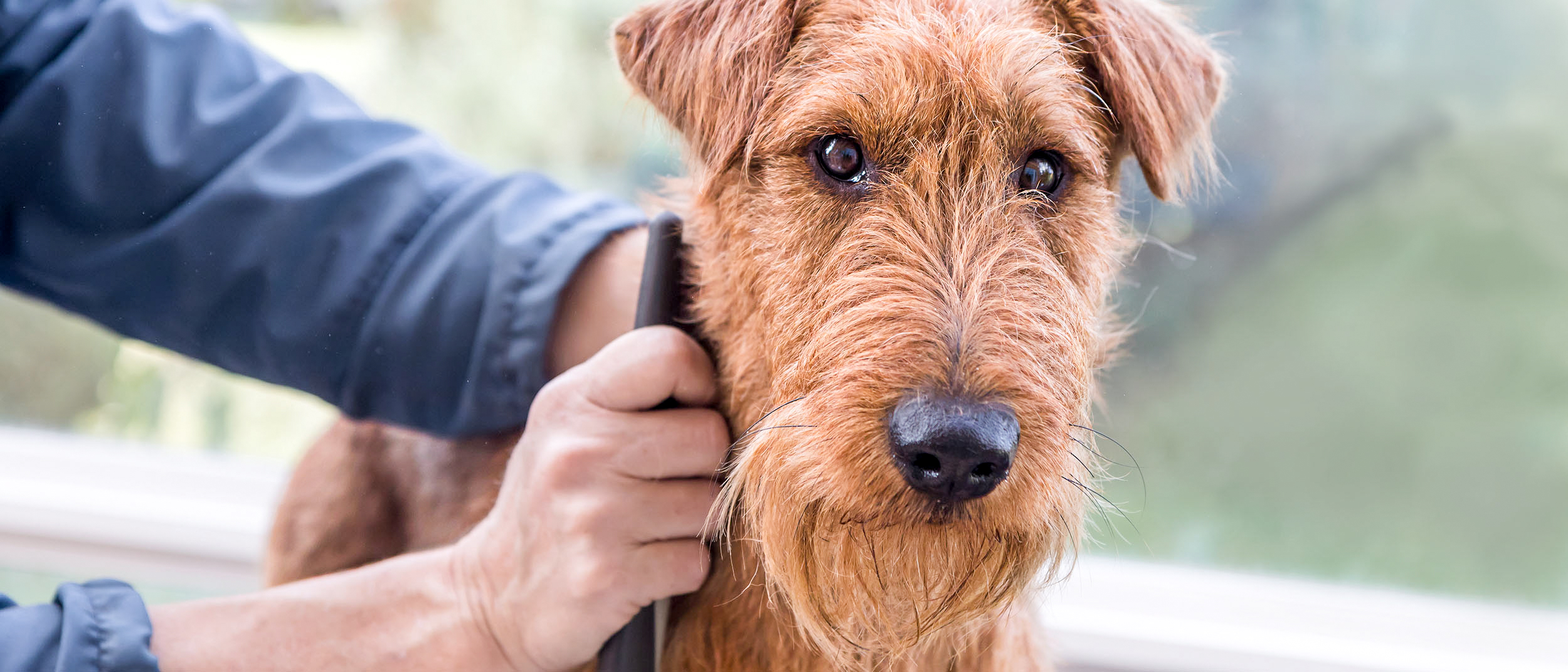Why is my dog losing its hair?

A glossy, thick coat is a good indicator your dog is getting everything they need from their diet, environment and lifestyle - so it can be distressing to see your dog shedding or losing hair, and sometimes difficult to know exactly why it’s happening.
Hair loss symptoms in your dog
The symptoms of hair loss can include your dog’s hair feeling brittle or dry, shedding more hair than normal, and the appearance of bald patches which can be circular or irregularly shaped. Hair loss might also be focused on a specific region or generalised across your dog’s whole body.
Common causes for hair loss in dogs
A very common cause of hair loss in dogs is an infestation by parasites such as mites, lice or fleas. In particular, if your dog is losing hair around its neck and tail, there’s a high chance it’s due to fleas. These tiny parasites can rapidly infest your dog and irritate their skin; this leads to intense itching or scratching, which in turn can cause hair loss.
Any skin condition your dog has, including eczema or dandruff, can eventually lead to hair loss. If your dog is uncomfortable or their skin is causing them distress, they’ll try to alleviate this by scratching, licking and itching themselves. Over time, this can lead to hair loss as specific areas of skin are weakened and their coat pulled out.

Hair loss in dogs can also occur due to nutritional deficiencies, the presence of which would otherwise support the development of healthy skin and hair. Keratin, the core component of hair, needs sulphur amino acids to be synthesised properly; without these, your dog might have slow hair growth, their hair may feel brittle and eventually they'll suffer from hair loss. Similarly, biotin is a key nutrient in supporting healthy skin and hair and protecting against complaints such as hair loss.
If your dog is experiencing hair loss, it may also be one symptom of a more complex problem. Ovarian or testicular tumours, particularly in older dogs, can cause localised hair loss – the tumour secretes hormones which disturbs the natural sexual cycle and growth of healthy hair.
Cushing’s disease, a common problem in the dog population, can also cause hair loss. This is where a tumour develops which leads to your dog’s adrenal gland producing too much cortisol, resulting in obesity, hair loss, dark patches and several other behavioural symptoms. Another condition, hypothyroidism – when your dog’s hormone production is underactive – can have hair loss as one of its symptoms.
Protecting against hair loss
Some of the more complex causes of hair loss, such as Cushing’s disease, must be treated by a vet and closely monitored. However, you can also help protect your pet against hair loss at home:
- Make sure to follow the recommended guidelines for regular, effective treatment against fleas and their eggs
- Use a dermatologically-approved, specialist shampoo for your dog to alleviate any itching and therefore discourage scratching
- Give your dog a food which is enriched with nutrients to support their skin and hair development, including biotin and high-quality, highly-digestible proteins
It’s important to take your dog to your vet once you’ve noticed any hair loss so they can have a thorough check up and be given the right treatment. You can also ask your vet for advice about caring for your dog’s skin and coat at any time.
Find a vet
If you have any concerns about your dog’s health, consult a vet for professional advice.
Like & share this page